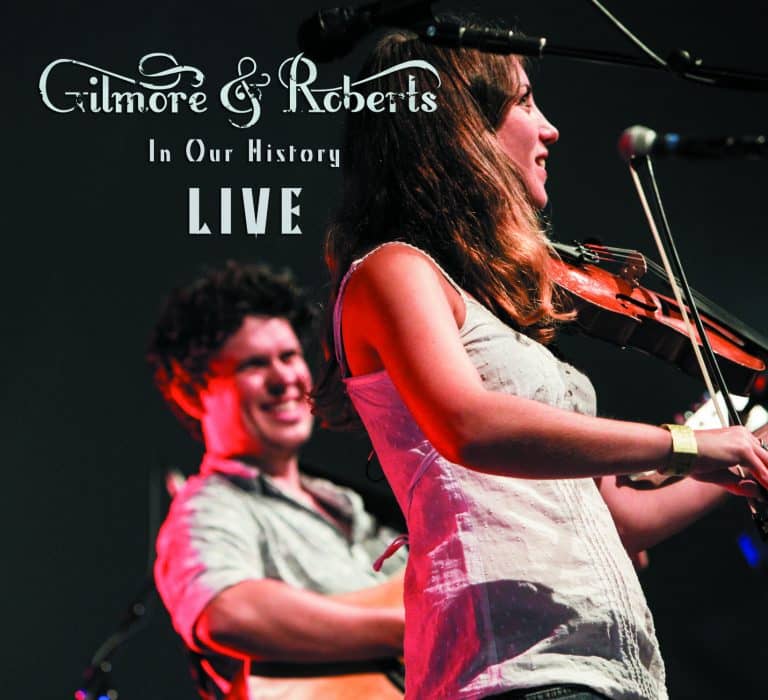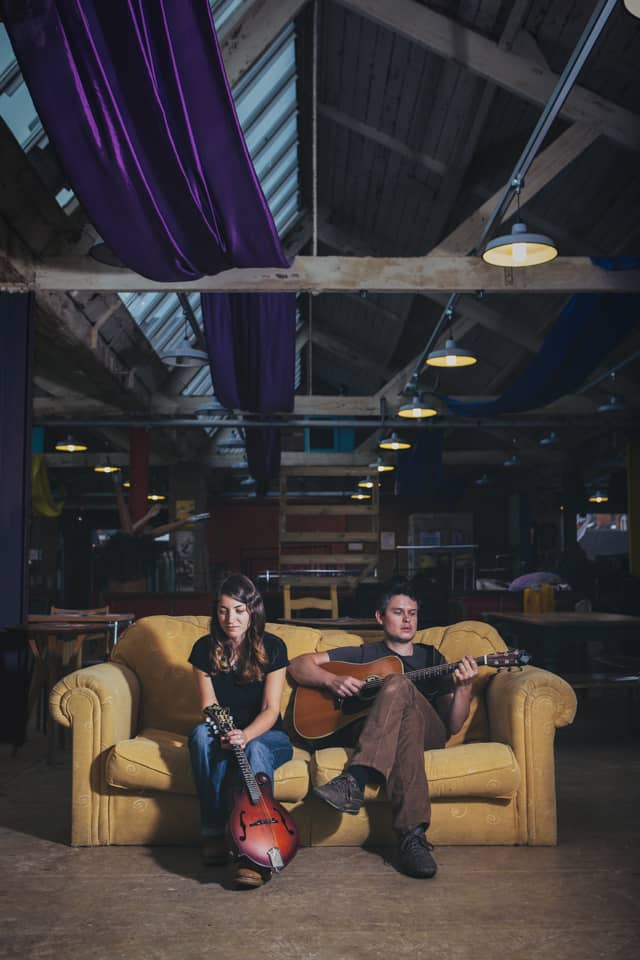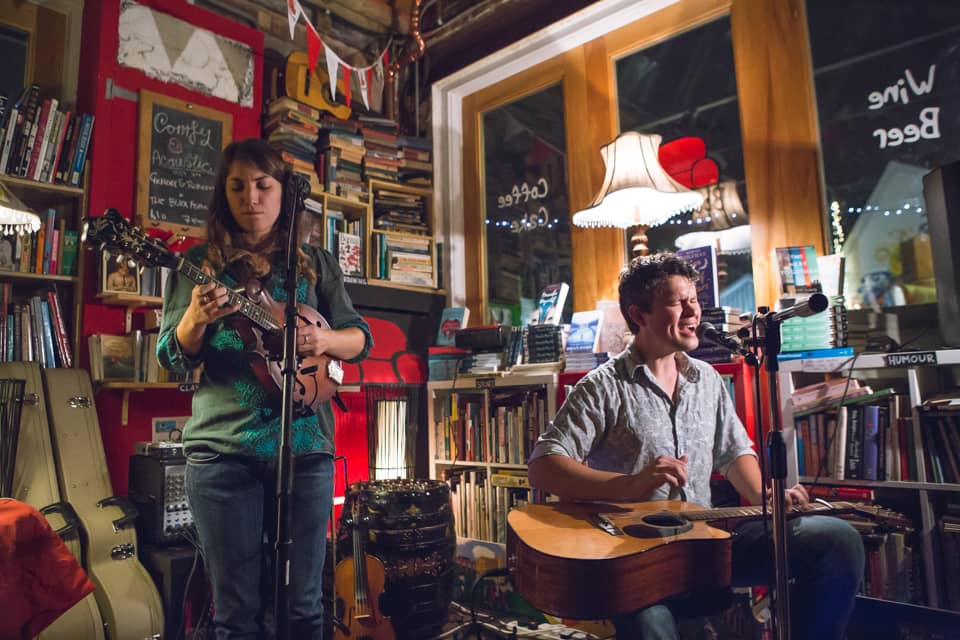There’s a popular idea that it takes 10,000 hours of practicing something, about ten years in practical terms, to become an expert in it.
The idea came from a paper written in 1993 about a group of German psychologists who studied violinists. They concluded that what we refer to as talent, is actually nothing more than the result of extensive practice with 10,000 hours identified as the amount of practice that differentiates the best from the ‘also-rans’.
The idea became widespread when it was referred to in Malcolm Gladwell’s 2008 book ‘Outliers’ and whilst it’s been debated ever since, the concept seems to have lost none of its general appeal.
The bottom line is that some things just take time to reach their best. Perhaps by way of example, this year marks the tenth anniversary of Katriona Gilmore and Jamie Roberts’ recording and performing career as a duo. Somewhat befitting of the Malcom Gladwell idea, while each of their four studio albums has received critical acclaim in it’s own right, this year has seen the duo reach new heights in terms of profile, recognition and general ‘buzz’ on the UK folk scene. The buzz is largely a result of their most recent studio album ‘Conflict Tourism’ (read the FRUK review), being nominated for best duo at the BBC R2 Folk Awards and some outstanding festival performances over the last few summers.
The duo themselves acknowledge that time has played a big part in getting them to where they are;
“I think for the first few years, Gilmore and Roberts was a bit on the back-burner” reflects Jamie, “particularly on the first album in 2008, we were still finding our feet in terms of settling on a sound. We never really set out with something specific in mind but I think over the years we’ve gradually settled on a coherent sound…you can hear it and it sounds like us. Also, year on year we’ve kept raising the bar a little bit in terms of profile. It’s a slow process but everything seems to help and it’s going in the right direction all the time.”
Katriona agrees; “I think that’s a good thing doing it slowly. If you think about people on X-factor and stuff, they go from being nobody to being everywhere in two weeks. They’re famous for six months and then that’s it, gone. Whereas if you build up your fan-base slowly over time, you’ve got more longevity in your career and more potential for staying around rather than just disappearing.”
The duo decided to celebrate their ten year history by releasing a live album earlier this month entitled ‘In Our History – Live’ (read the FRUK Review here). Recorded over ten different gigs during the spring of this year, it’s representative of Gilmore and Roberts’ live performance as it stands today;
“We’ve had quite a lot of people asking at gigs if we were ever going to do a live album” Jamie explains, “because we do quite a lot of things live that we don’t do on the record, and vice-versa…not in terms of material but in terms of arrangement. We use different techniques to present it live. So I think quite a lot of people wanted to have both options.”
However, presenting their live shows in a recording wasn’t something that Katriona found easy;
“It’s something that we’ve wanted to do for a long time but we’re both quite picky about performances. When you play a gig there’s always mistakes and little slightly dodgy bits, but it’s fine because it’s live. But as soon as you’ve got the opportunity to listen to it for a second, third and fourth time it’s like ’this isn’t good enough and that’s not good enough, we can’t use that etc.’ So it was a challenge; I really wanted to release a live thing but I didn’t know whether mentally I could handle it! It was cool though…we do some stuff where it’s about people joining in and you can really hear the audience singing along with us. There’s one that was recorded in a church so the audience sound like a lovely choir!”
With four studio albums under their belt, Katriona and Jamie have a sizeable catalogue on which to draw from. I was interested in how they felt about Conflict Tourism, their most recent studio offering, a year on from its release?
“We’re still super proud of it” Katriona replies, “Sometimes by this point you’re thinking ‘Right, I want to crack on with the next thing’ but actually it feels like I just want to get some more out of that album because I’m really happy with it.”
“It still feels really new to us” Jamie agrees. “A year doesn’t seem like a long time…it seems like its not been out very long really.”
Whilst their mix of traditional folk and more contemporary influences has become part of Gilmore and Roberts’ distinctive approach to music, Conflict Tourism in particular was noted for its modern production and I wonder this is a direction the duo are headed from now on. Katriona explains, however, that their approach to recording is driven from the songs themselves, so it really depends on the material that they come up with for the next album.
Jamie continues; “I think it’s good to try and make each album have some sort of different sound than the previous one. The previous album we worked with a producer in London and we were really pleased with how the album came out…it was different to how we’d sounded before. Then for Conflict Tourism we thought well, we could do the same again but we’ll end up with a fairly similar sound, whereas if we go with somebody else who’s got a different approach it might inject something different that we might not have thought of. With Conflict Tourism, Mark Tucker did a bit more in the way of programming drum parts and rhythm tracks which really added to the contemporary production of it. I think to some extent it helps to make us appeal to a wider audience. It’s funny…I think some of the more traditional straight up folkies might have been a bit put off by that, but in the grand scheme we’re at the contemporary end of the folk scene and in our eyes it was trying to bridge that gap a little bit and pull in a more crossover audience.”
Curious as ever about the creative process, I ask Katriona and Jamie how they come up with the songs and sounds that have become so distinctive of their musical style?
“We write separately” Katriona explains. “We’ve never managed to sit down and write anything together. Sometimes when we bring it to the table it’s fully formed. With Jamie’s stuff, quite often he’s got a clear thing in his head of the kind of sound he wants to have whereas I’ll come up with something and go ‘Right, here it is…what shall we do with this then because I have no idea!’”
Jamie continues; “It could be quite bare bones, like a song with the chords under it but no arrangement. Then we’ll just sit down together for hours and hours, arranging it and working it out. We do put a lot of time into the arrangements…it’s a big part of where we found our sound.”
As to where their lyrical ideas come from, Katriona explains that it’s just ‘everyday stuff’;
“Just stories and phrases really. We’ve not got much stuff for the new record yet but one song I’ve written is based on a single line of script from a TV show…the character said the line and I was like ‘Ah…that’s a song title that is!’. It can be the smallest thing…a line in a book or something that’s just a really poetic line. You might not even use that line, but it makes you think of something. It’s always people and stories really.”
Reflecting on how much has happened in the world during the last ten years, I ask the duo how they feel the folk music scene has changed since they released their first EP in 2006;
“It’s funny seeing how it’s developed” Jamie observes. “When we started, there was a generation above us that were big on the scene at the time…people like Nancy and James, Spiers and Boden, Faustus…people like that who were really big at the time and we looked up to them. Now we’re at the level that they were then and we can see all these younger people coming through…people ten years younger than us, which is both amazing and kind of scary! It’s so cool to see so many incredible acts coming out of nowhere.”
“I’m sure it will change more in the future in terms of the traditional folk clubs” he continues, “there are still lots there, but it’s the same audience and they’re struggling to get younger audience members to come in, so I think we’ll start to see more of those clubs die out. But there are a lot more alternative gigs popping up like bookshops, café’s, tearooms…there’s a launderette up in Durham that does gigs, there’s a fish and chip shop that does them…quirky little venues. I think we’ll see more of them starting to replace folk clubs I think. I’d like to see folk clubs continue though because there are some really great ones.”
“And in terms of how you get your music out there the internet has changed everything” Katriona adds. “Obviously we had it when we started out, but even since then Spotify and Soundcloud have happened, Youtube is much bigger and you can potentially get royalties from it. It’s so much easier to have good quality videos, whereas before you were relying on sending people a youtube link that somebody had shakily filmed at a gig with poor sound quality.”
Like many of the artists I talk to, for Gilmore and Roberts the challenges of being independent and self-managed creates challenges in terms of running a business and being creative at the same time;
“I find it hard to prioritise writing because there’s so much admin” Katriona admits. “If you book your own gigs, you’re sending out posters and sending out emails all the time…that kind of takes over and it becomes ‘I have to do this today so I’ll do writing tomorrow’, but the next day something new comes in and you’re like ‘oh, now I’ve got to respond to this.’ I think people who don’t do this for a living are like ‘What do you do all day? You just play two hours in the evening and that’s it!’”
“Actually sitting down and practicing your instruments…making the time to do that is quite hard” Jamie concurs. “If you’re on the road you’ve got your routine; you’re driving, you’ve got your sound-check, you go and get something to eat…sitting down and practicing doesn’t happen. Then as Katriona says, when you are at home you’ve got all the admin side of it to catch up on and the writing and practicing just gets pushed to the bottom of the list.”
Difficulties aside, again like most of the artists I speak to, the benefits of being musicians outweigh the challenges;
“I’m proud of what we’ve achieved” Katriona confirms. “Just getting to do your favourite thing for your job. The coolest thing that happened recently was a girl who was maybe fifteen or so coming up and saying that she played the violin…then her mum came up and said ‘You know how you say in interviews that if it hadn’t been for seeing Joe Broughton you wouldn’t be doing this today? Well, you’re Joe Broughton for my daughter!’ It was the coolest thing. When people get in touch and say ‘Can you send me the chords to your song because I want to learn it and play it for my A-level music performance’, or they just want to play it at the pub or in their house…that somebody wants to spend the time learning one of our songs…that’s amazing. It’s way beyond what I ever hoped to get out of playing music.”
Looking forward, Gilmore and Roberts plan to continue building on the foundations they’ve set over the last ten years. “Next year we’re planning on doing more festivals as a band” Jamie explains. We did Cropredy Festival this year with a drummer and a bass player which was great…we really enjoyed it. It went down really well so we’re going to try and push that for more festivals next year.”
“I would love for somebody else to cover some of our songs” Katriona remarks as we’re wrapping up our chat. “We’ve had it before, people we know….4Square have just recorded one of my tunes on their new album which is really cool. That’s something that I would like to happen more.”
More Gilmore and Roberts cover versions? I think given the duo’s popularity and inevitable future success, that’s something that’s very, very likely to happen….
In Our History – Live is Out Now
Available via Gilmore & Roberts here: www.gilmoreroberts.co.uk/product/inourhistory-live/




